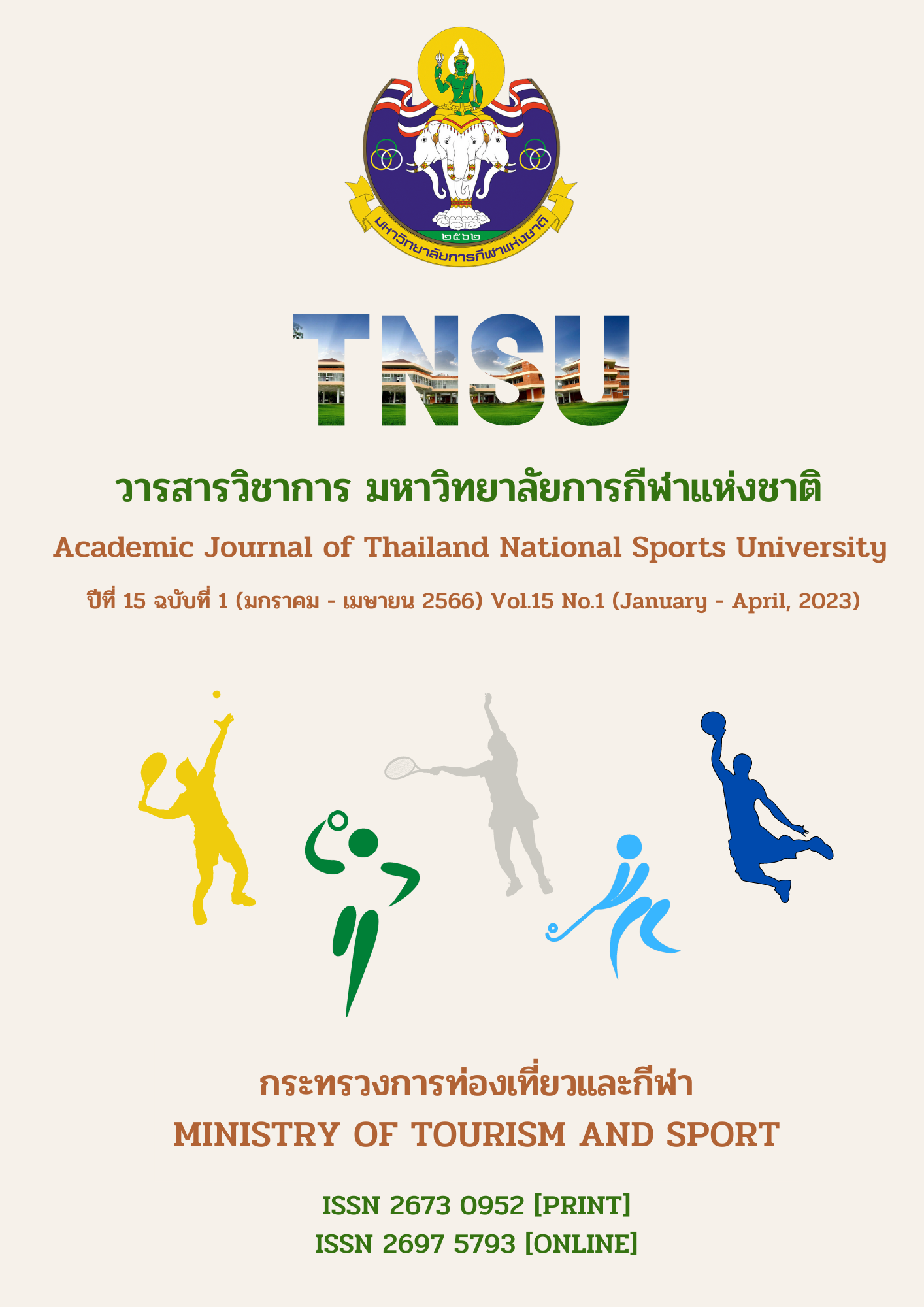EFFECTS OF HEALTH EDUCATION LEARNING MANAGEMENT USING VISUAL THINKING ON LEARNING ACHIEVEMENT AND CREATIVE THINKING OF SECONDARY SCHOOL STUDENTS
Main Article Content
Abstract
Purposes: To study the effects of health education learning management using visual thinking on learning achievement and creative thinking of secondary school students. Methods: The subjects were 79 seventh grade students, divided equally into 39 students for the experimental group who were assigned to study under the health education learning management using visual thinking and 40 students of the control group were assigned to study with the conventional teaching method. The research instruments were comprised of 8 health education lesson plans using visual thinking with IOC 0.96 and the data collection instruments included the learning achievement in the area of knowledge, attitude, practice tests and creative thinking test with IOC 0.90, 0.92, 0.98 and 0.97, reliabilities were 0.81, 0.82, 0.83 and 0.80. The data were analyzed by mean, standard deviation and t - test. Results: The research findings were as follows: The mean scores of the learning achievement in the area of knowledge, attitude, practice and creative thinking of the experimental group students after learning were significantly higher than that before learning at .05 level., and the mean scores of the learning achievement in the area of knowledge, attitude, practice and creative thinking of the experimental group students after learning were significantly higher than that of the control group at .05 level. Conclusion: Health education learning management using visual thinking effect on learning achievement and creative thinking of seventh grade students were higher than health education learning management with the conventional teaching method.
Article Details

This work is licensed under a Creative Commons Attribution-NonCommercial-NoDerivatives 4.0 International License.
The published article is a copyright of the Academic Journal of Thailand National Sports University. The passage appeared in each article in this academic journal is a perspective of each author which is not related to the journal. Each author is required to be responsible for all components of his/her own article. If there are any mistakes, each author must be responsible for those mistakes on his/her own.
References
Anderson, L. W., & Krathwohl, D. R. (2001). A taxonomy for learning, teaching, and assessing: A revision of Bioom’s taxonomy of educational objectives. New York: Addison Wesley Longman.
Aree Phanmanee. (2014). Practice to think for think creatively. Bangkok: Chulalongkorn University Press.
Clary, R. M., Brzuszek, R. F., & Fulford, C. T. (2011). Measuring creativity: A case study probing rubric effectiveness for evaluation of project - based learning solutions. Creative Education, 2(4), 333 - 340.
Department of Children and Youth. (2018). The 2nd National Child and Youth Development Plan 2017 - 2021. Bangkok: JS Printing House.
Fleming, N. D., & Mills, C. (1992). VARK a guide to learning styles. Retrieved from https://vark-learn.com/introduction-to-vark/the-vark-modalities/
Gholam, A. (2019). Visual thinking routines: Classroom snapshots. Athens Journal of Education, 6(1), 53 - 76. doi:10.30958/aje.6-1-4.
Guilford, J. P. (1967). The Nature of Human Intelligence. New York: McGraw - Hill.
Guilford, J. P., & Hoepfner, R. (1971). The Nature of Human Intelligence. New York: McGraw - Hill.
Housen, A. (2001). Voices of viewers: Iterative research, theory and practice. Arts and Learning Research Journal, 17(1), 1 - 12.
Housen, A., & Yenawine, P. (2009). VTS visual thinking strategies. Retrieved from https://sjmusart.org/sites/default/files/files/VTS%20at%20a%20Glance.pdf
Independent Committee for Education Reform (ICER). (2019). Competency – based curriculum. Retrieved from https://www.thaiedreform.org/wp-content/uploads/2019/08/Core_ competency_11.pdf
Jellen, H., & Urban, K. K. (1986). The TCT - DP (Test for creative thinking - drawing production: An instrument that can be applied to most age and ability groups. Creative Child and Adult Quarterly, 11, 138 - 155.
Jeong, J. H. (2017). Visual thinking. In Nichapat Promsuwan (Ed.), The benefits of visual thinking. Bangkok: Good Head Printing & Packaging Group.
Moorman, M., Hense, D., Decker, K. A., & Busby, K. (2017). Learning outcomes with visual thinking strategies in nursing education. Nurse Education Today, 51, 127 - 129. doi: 10.1016/j.nedt.2016.08.020.
Nanavaty, J. (2018). Using visual thinking strategies with nursing students to enhance nursing assessment skills: A qualitative design. Nurse Education Today, 62, 39 - 42. doi: 10.1016/j.nedt.2017.12.014.
Office of the Education Council. (2017). The national scheme of education B.E. 2017 - 2036. Bangkok: Prikwan Graphic.
Poonyavi Saengmontri. (2015). Development of English lessons using visual thinking strategies to promote English speaking and English creative writing abilities among Mathayom Suksa 5 students (Master’s thesis), Chiangmai Rajabhat University.
Prapansiri Susoarat. (2013). Thinking Development (5th ed.). Bangkok: 9119 Technic Printing.
Salih, E. (2017). Effectiveness of the strategy of guided imagination on the development of visual thinking skills among the eighth grade students in Yemeni Schools. Journal of Social Studies, 28(2), 53 - 80.
The Teachers’ council of Thailand. (2019). National education act (No.4), B.E.2562 (2019). Retrieved from http://www.ratchakitcha.soc.go.th/DATA/PDF/2562/A/057/T_0049.pdf
Therese, I. P., Newman, K., & Ronald, K. (2019). An exploratory study using Visual Thinking Strategies (VTS) to improve observational skills. American Association of Colleges of Pharmacy, 84(4), 1 - 15. doi: 10.5688/ajpe7600.
Tissana Kaemanee. (2017). Science of teaching: Knowledge for effective learning process (21st ed.). Bangkok: Chulalongkorn University Press.
Torrance, E. P. (1973). Encouraging Creativity in the Classroom. Lowa: WM. C. Brown.
Wachiravit Changkeaw, & Jintana Sarayuthpitak. (2019). Effects of health education learning management using productivity - based instructional model on learning achievement and ability to create health innovation media of tenth grade students. Journal of Education, 47(4), 429 - 444.
Watcharaphon Hasasee. (2018). Creative thinking. Retrieved from https://www.novabizz.com/NovaAce/Intelligence/Creative_Thinking.htm?fbclid=IwAR1nHVI835UuJPLSfl7D_JrNTtnQ28hOXHqt3_S4DqThOQKSHfCEOSEZgZ8#ixzz2FxiGYhNI
Yenawine, P. (2010). Visual understanding in education. Retrieved from www.vue.org
Yeom, E. Y. (2018). How visual thinking strategies using picture book images can improve Korean secondary EFL students’ l2 writing. English Teaching, 73(1), 23 - 47. doi: 10.15858/engtea.73.1.201803.23.


